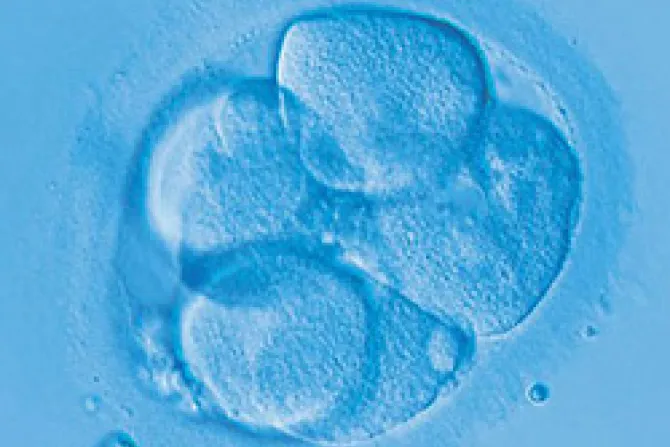Boston, Mass., Oct 1, 2010 / 05:03 am
In what one expert calls a “major paper,” researchers have reported new advances in creating efficient and safe alternatives to human embryonic stem cells.
A team led by Derrick J. Rossi of the Children’s Hospital Boston used laboratory-made versions of natural biological signals to quickly convert ordinary skin cells into cells that appear virtually identical to embryonic stem cells. They can then coax these cells to change into specific tissues that would be a match for transplantation into patients, the Washington Post reports.
Douglas A. Melton, co-director of the Harvard Stem Cell Institute, said the research produced a “major paper” in the field of regenerative medicine.
Previous research pioneered in 2006 involved the creation of induced pluripotent stem (iPS) cells by activating four genes. However, the process involved inserting genes into cells using retroviruses, which raised the risk the cells could cause cancer.
The new approach involves the use of messenger RNA (mRNA). According to the Washington Post, the DNA inside cells use mRNA to create proteins needed to perform various vital functions. The researchers created mRNA molecules carrying instructions to tell the cell’s machinery to produce the four key proteins needed to reprogram the cell into an iPS cell.
The researchers found their method to be surprisingly fast and efficient at reprogramming the cells. The cells were converted in about 17 days, about half the time of previous methods. In other aspects the method proved up to 100 times more efficient than previous approaches.
Tests indicated the cells had not experienced any disturbance to the DNA and were virtually identical to embryonic stem cells. The researchers successfully coaxed the cells to become muscle cells.
Embryonic stem cell research (ESCR) is controversial because it involves the use of cells harvested by killing human embryos. Its opponents include pro-life ethicists and Catholic bishops.
According to the Washington Post, Rossi and other researchers said ESCR is still crucial because the embryonic stem cells validate alternatives.
The legality of federal funding for embryonic stem cell research is currently being contested in court.


